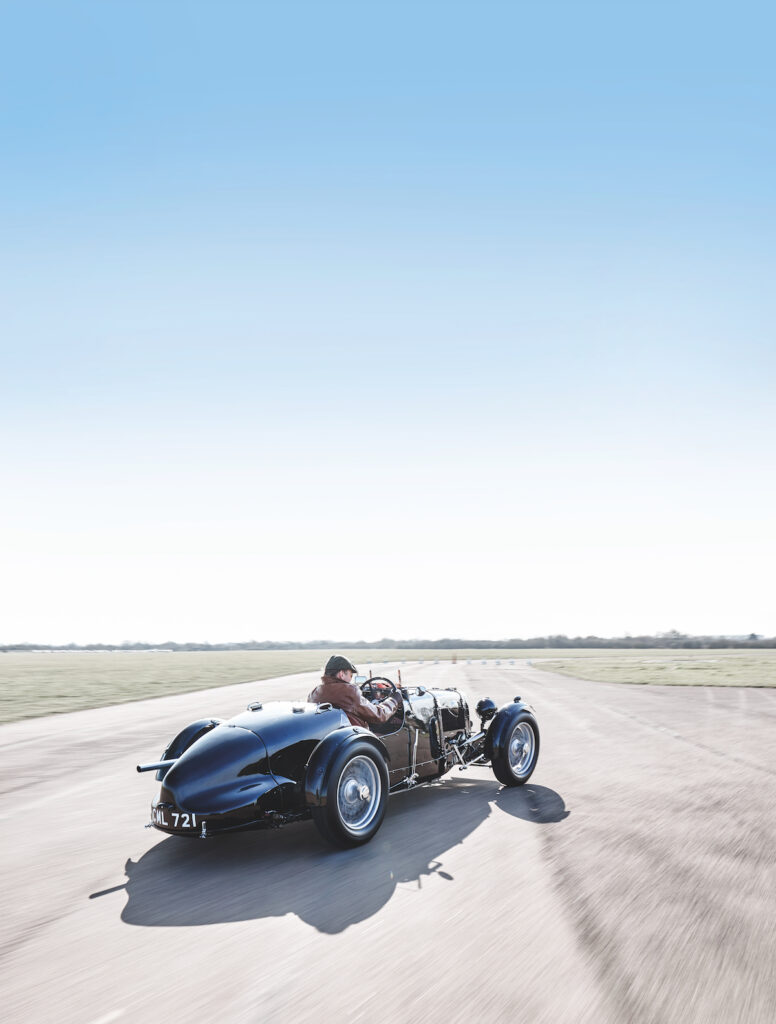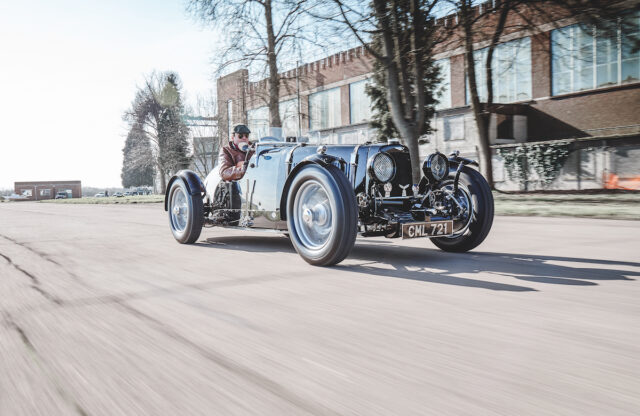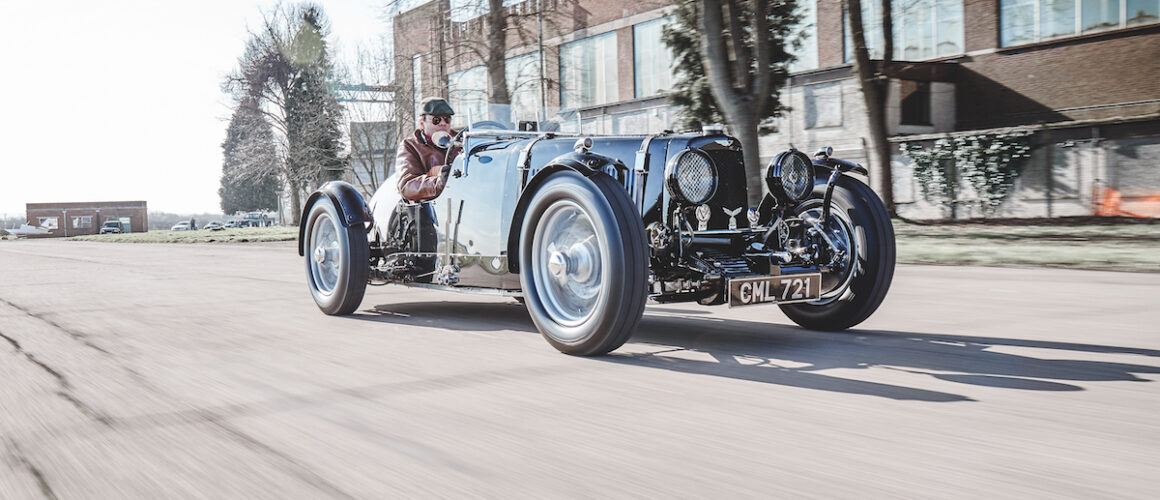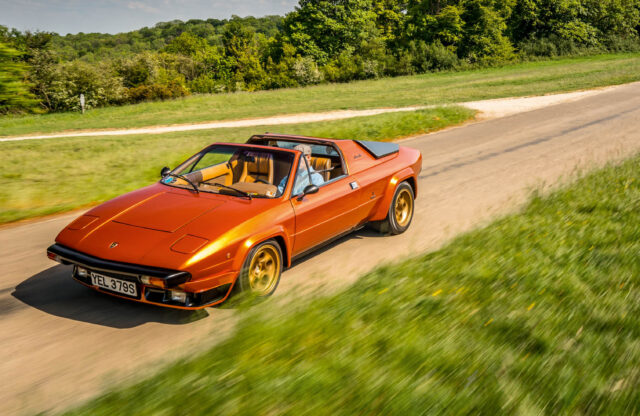Racing improved the breed to such an extent that Aston Martin named its most illustrious pre-war racer after the Ulster TT
Aston Martin was voted the ‘coolest’ brand in modern Britain in 2010 and ’11, ahead of iPhone, Apple and YouTube, no doubt by a panel of trendy urban Hipsters who vaguely remember that the original James Bond in the sizeable shape of Sean Connery drove a Silver Birch DB5 in Goldfinger in 1964. Indeed, modern Astons are svelte and desirable sports cars, but the marque’s beginnings were a lot grittier and more oily.
Aston Martin was founded by Lionel Martin and Robert Bamford in 1913, who built their first car in a workshop in Henniker Mews, London, later moving to cramped quarters in nearby Abingdon Road. The company produced sports and racing cars for the gentry from perfunctory locations, usually running on a shoestring. The shoestring snapped first in 1924 and again in 1926. Later that year Bill Renwick and Augustus ‘Bert’ Bertelli took control.
Thus began the successful Bertelli phase cars, built until 1937. They include the 1½-litre T-type, International, Le Mans, the MkII and the Ulster racing derivative, plus the 2-litre Speed Model. Bert Bertelli was an accomplished engineer and designer but not much of a beancounter, so the company suffered further financial problems and was taken over in 1932 by shipbuilder Sir Arthur Sutherland. Yet further glory was still ahead…
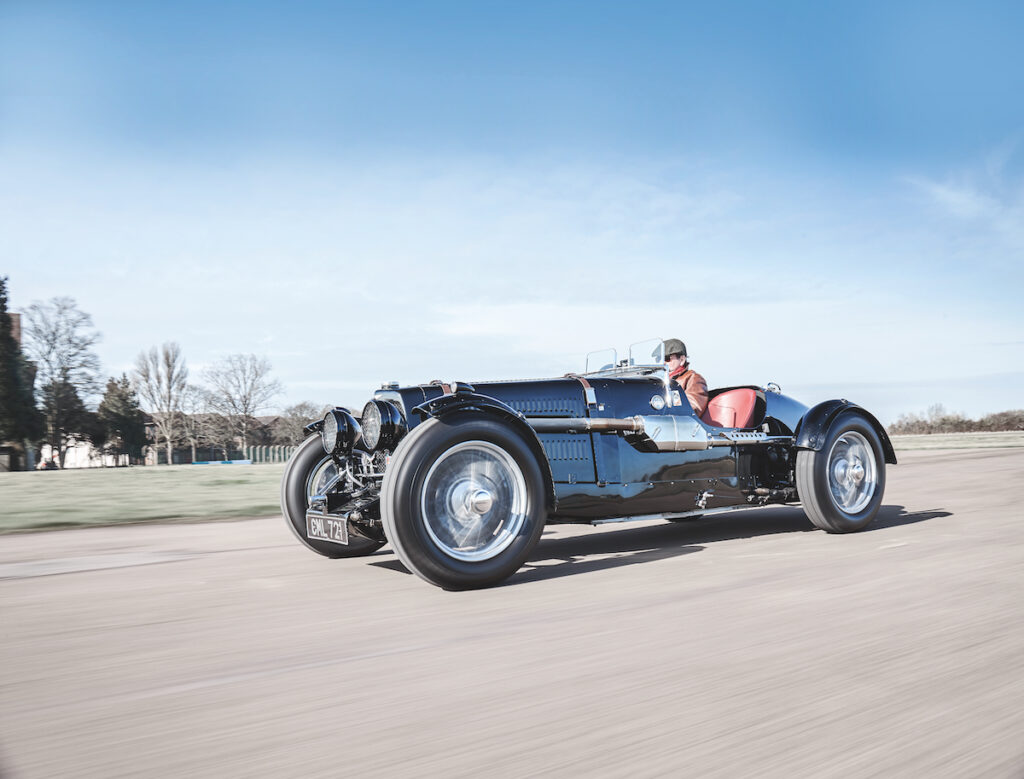
The Le Mans label made its debut on the competition version of the First Series International following Aston’s class win and fifth place overall at Le Mans in 1931, and the model then placed fifth and seventh in the 1932 race and collected the Rudge-Whitworth Biennial Cup.
The Aston Martin MkII was launched in 1934 and, considerably lightened, entered Le Mans again but all the team cars failed to finish. Being superstitious, Bertelli had his British Racing Green cars painted in Italian Racing Red (on the advice of his wife) and, at the next race, the RAC Tourist Trophy at Ards in Ulster, the trio of cars finished first, second and third in class, taking the Team Prize. A month later a customer version was shown at the Earls Court Motor Show to reflect the recent success in Northern Ireland and was given a new name – Ulster. It cost a substantial £750 and Bert Bertelli later stated that the Ulster was the best car he had ever made. In 1935 another works car, chassis number LM20, finished third overall at Le Mans.
Pre-War Aston Martin ‘Works Team Cars’ were all designated with chassis numbers starting with the letters LM and were numbered 1 to 23. LM1 to LM10 were all based on the International chassis, with the ‘Ulsters’ starting in 1934 at chassis number LM11 and going through to LM21 in 1935 (they omitted ‘unlucky’ chassis number LM13). The example you see here is LM19.
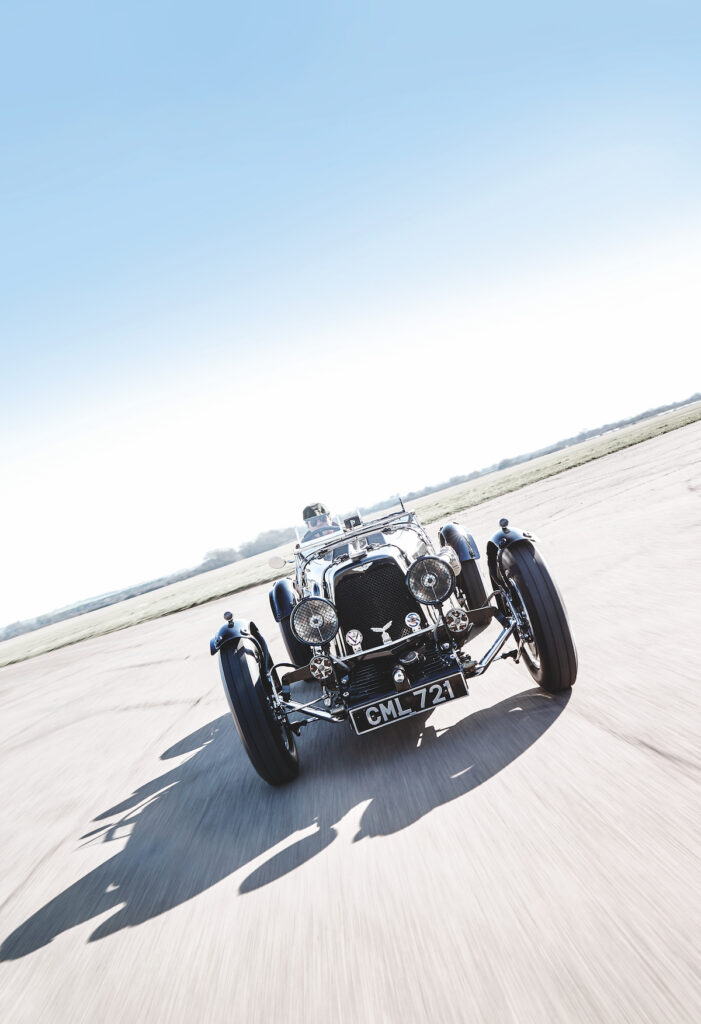
In 1935 the attractive bodywork designed by Bert’s brother Enrico ‘Harry’ Bertelli was modified, evolving from previous racing experience, and these versions (LM18 to LM21) are known as the low-radiator cars. The painted anti-glare radiator shell was reduced in height, thereby cutting down the mass of water it needed and reducing the frontal area as well. A further upshot is that the low-rad cars are even more attractive.
The Works cars had carefully assembled 1495cc, single-overhead-cam, four-cylinder engines with dry-sump lubrication, domed pistons and a high 9.5:1 compression ratio. With a special Laystall crank, 13/8in SU carbs and hotter cam, the engines produced a strong 90bhp. Combined with a close-ratio four-speed ’box and the ‘aero’ improvements, the sturdy, low-rad Ulsters were capable of more than 100mph for long periods of time.
At Le Mans in 1935 the scruntineers initially did not accept the small cycle wings because they did not cover the tyres sufficiently, so wing edges were added to the existing wings, which this car still wears today. As with all the Works cars the racing colour finally chosen was red, and some of the original hue is still visible under the bonnet. During the race LM20, driven by Martin and Brackenbury, finished first in class and third overall. LM18, driven by Elwes and Morris-Goodall, finished 12th overall and seventh in class. LM19 crashed into the banking at White House at 9pm that evening in bad weather and turned upside down ending its race. Driver Fotheringham escaped… shaken, not stirred.
LM19 was rebuilt and entered as part of a four-car team for the TT at Ards in September. The cars were fitted with the newfangled but untested Superflexit oil pipes, and first to suffer failure was Prince Bira in his privately entered car. He was followed by LM21 and LM19 with the same problem of terminal oil loss.
In 1936 Le Mans was cancelled because of industrial unrest, so LM19 went to Italy for the Mille Miglia. Tommy Clarke and Maurice Falkner were leading the class by 1½ hours but after refuelling in Macaretta they burnt a valve and had to retire. Bad fuel was the cause.
Later that year LM19 was sent to Montlhéry by the factory where the French Grand Prix was being held for sports cars. Dick Seaman, later of Mercedes-Benz GP fame, shared the driving with Clarke but they suffered braking problems and had to retire.
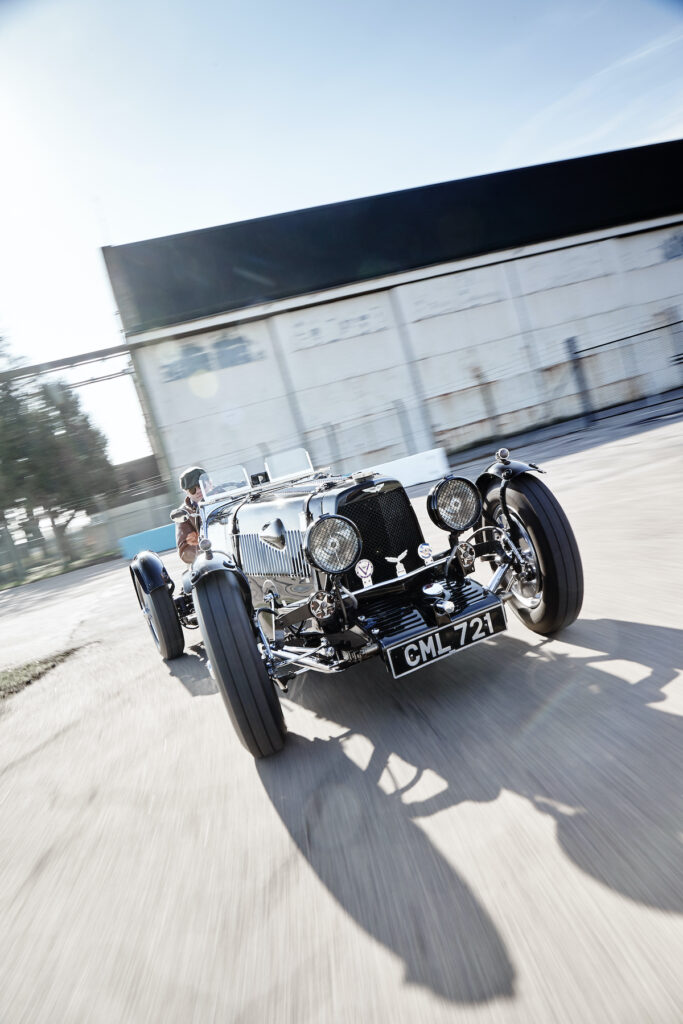
LM19 was sold in 1939 to a private owner who competed in club events through the 1950s. In 1968 it was bought by well-known Aston enthusiast Jock Campbell, who hillclimbed and raced the car until his death in 1976. The Ulster was passed to his son, then his grandson.
With its illustrious provenance, LM19, one of only ten Works Team Cars, is extremely well-known in Aston circles. And being one of only four low-radiator cars, LM19 is a fantastic-looking piece of kit. Not having been painted red for decades (and it was green for a time), it looks smart and tidy in gleaming black gloss with a red interior. It has quite a lot of chromework – Jock Campbell used to like to show his cars as well as race them, and his chosen colour was black – which sparkles in the early-morning sunshine, and it’s wearing very chunky 5.50/18 Blockley tyres. Looking at the archive photos, it seems they are the correct girth.
The Ulster is very good-looking but not obviously styled. Clearly a good coachbuilder, Harry Bertelli got the dimensions and details nicely resolved but this is a sparse racing car, which looks fit for purpose with nothing superfluous added. The ally coachwork is minimal and tightly formed over the light ash frame, which makes the Ulster appear diminutive. The car’s stance is wide and aggressive, capped with snug cycle fenders, a prominent exhaust, leather bonnet straps with quick release ammunition box catches and enough louvres to make the metalworker reach for his Woodbines.
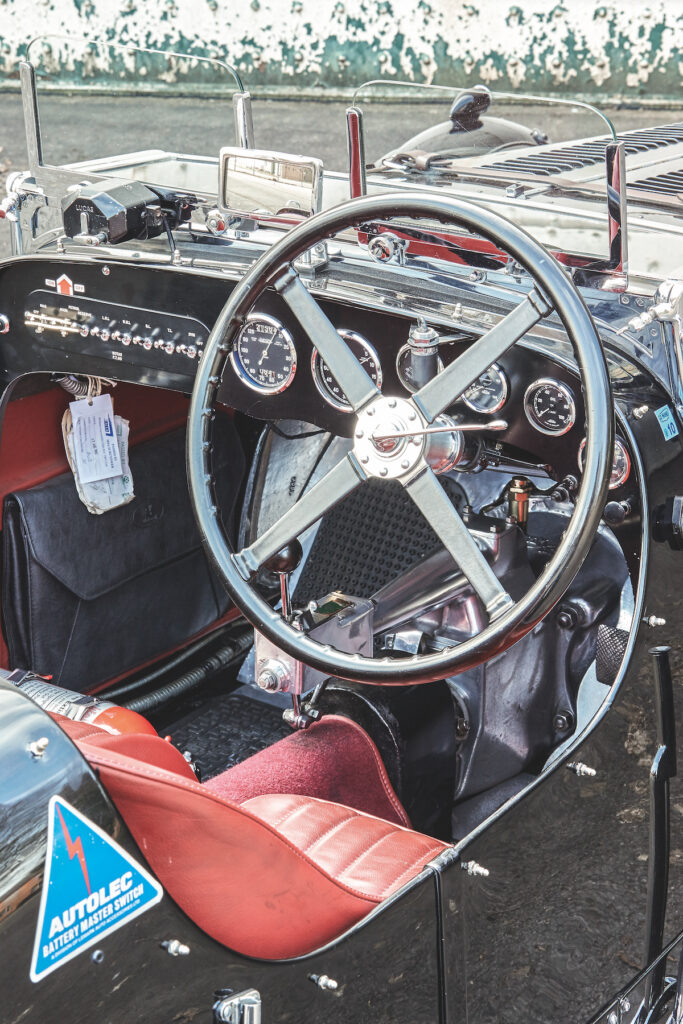
Climb into the confines of the low-mounted bucket seat and the interior is tight, with the large four-spoke steering wheel dominant. Punch the Rotax starter button and the little 1495cc engine fires with enthusiasm, immediately sounding as though it is of a much larger capacity. It is angry, light of flywheel and very keen to rev. The throttle pedal is mounted centrally between the clutch and brake pedal, which is on the right. The short gearlever offers four forward ratios with reverse safe behind a lock-out gate but the shift pattern is reversed from convention, so for first you pull your left hand towards yourself then push forwards, down to second, third is away and up and fourth back down.
The clutch is easy, the crash ’box allowing the selection of first with a snick and the 900kg Ulster is off with intent. The whole car fizzes with energy from the engine, gears howl and the steering fidgets as the crossply tyres nibble at the tarmac. Building some speed, you notice the ladder chassis writhing beneath you as you concentrate on the central throttle and crash ’box.
Learn the car and, as it warms through, it all begins to come together beautifully. The grunty four-cylinder lump is torquey and loud and wants to peg at five thou’. Initially the cold, cable-operated brakes squirrel the car about but, once they’re warmer, you learn to depress the pedal far enough to make sure they all bite evenly. Out on the Bicester Heritage test track the brakes are hardly needed. The trick is to keep carrying all the speed the Ulster can muster. It doesn’t feel underpowered yet it doesn’t have a surfeit of horses either. The joy is that the car’s balanced and alert chassis is always on-side and gets all the power down all of the time.
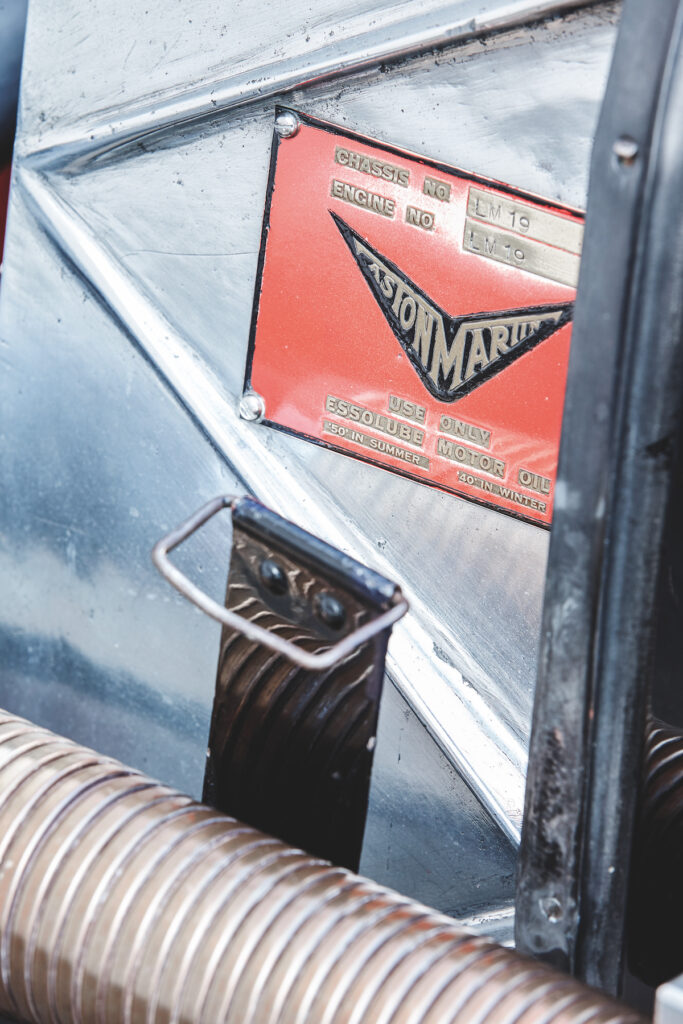
The Aston rides on solid axles front and rear, so the suspension does not have much travel but the ride is good and absorbs undulations. You can chuck the car into tight corners with abandon and balance it in an easy slide through the faster ones. All the time the lovely steering is communicating to you through your fingertips while your backside enjoys travelling at various angles of slew through the bends. The gearbox is easy on the way up but appreciates a double-declutch on the way down, and the now-warmer brakes are man enough.
The small aero screens keep most of the windrush off your face and you are sitting low which helps. The stubby gearshifter is right there, just a hand-span from the big steering wheel, which provides loads of fulcrum while you have fun leaning out of the cockpit to watch exactly how close you can place the nearside tyre to the apex. Inch-perfect is the answer.
All the time that high-compression engine is blatting out loads of grunt right through the rev range, and you really enjoy the tough little car’s perfect balance. It reminds me of a very fit Jack Russell terrier on the scent of its quarry: maybe not the biggest beast in the pack but certainly the most capable and committed.
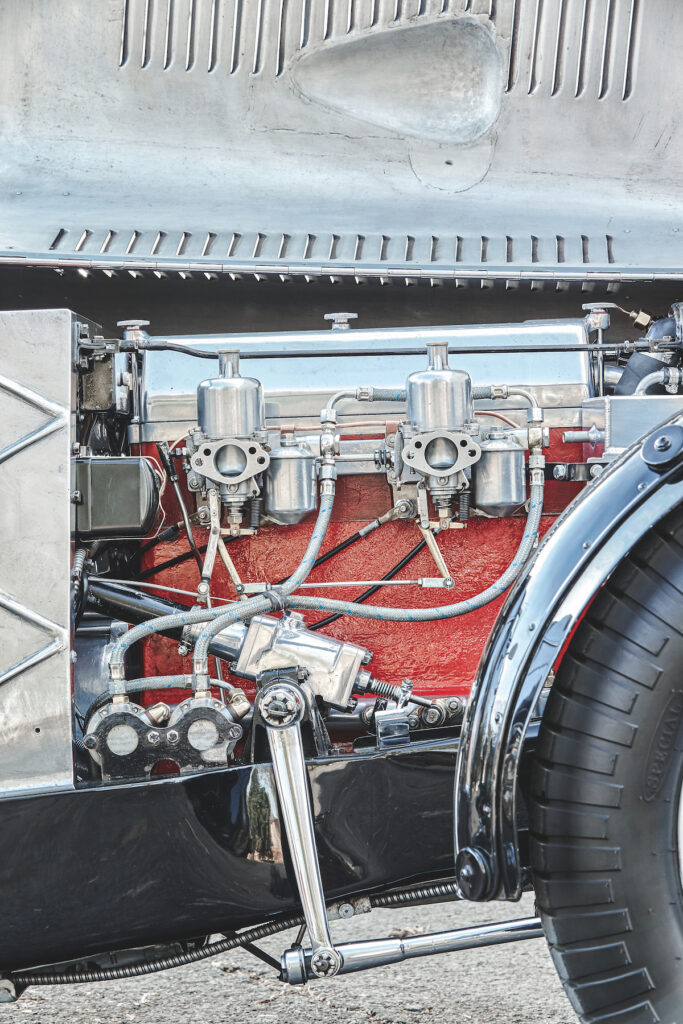
Factfile – 1925 Aston Martin Ulster
Engine 1495cc four-cylinder, SOHC, twin SU carburettors, dry-sump lubrication Power Approx 100bhp @ 5250rpm Transmission Four-speed manual, rear-wheel drive Steering Worm and castor Suspension Front and rear: solid axles, leaf springs, friction dampers Brakes Cable-operated drums Weight 900kg Top speed 100mph+
This article was originally published in Octane 145, July 2015
